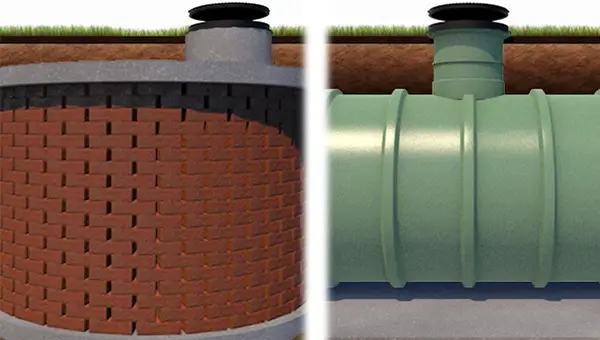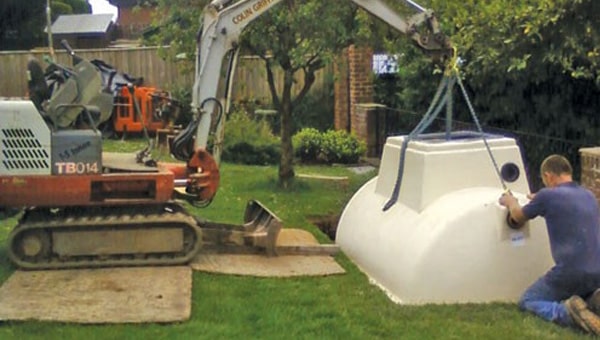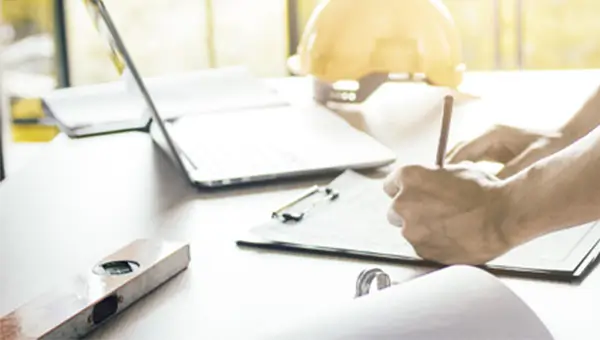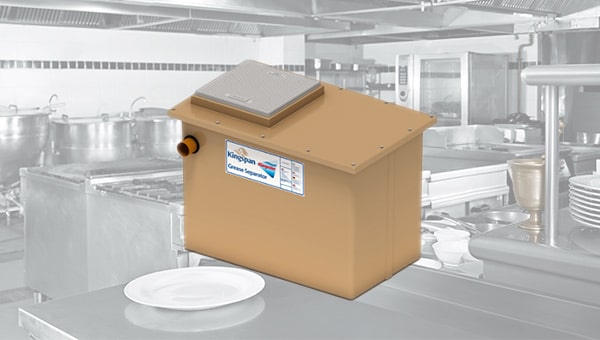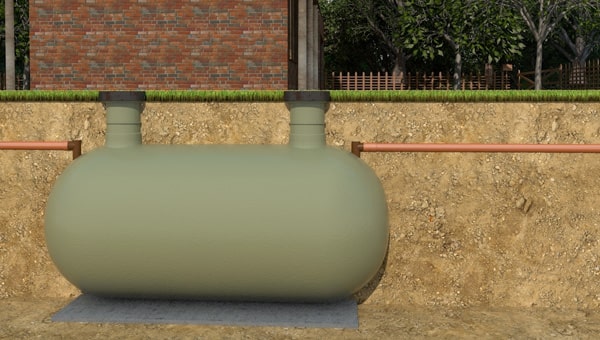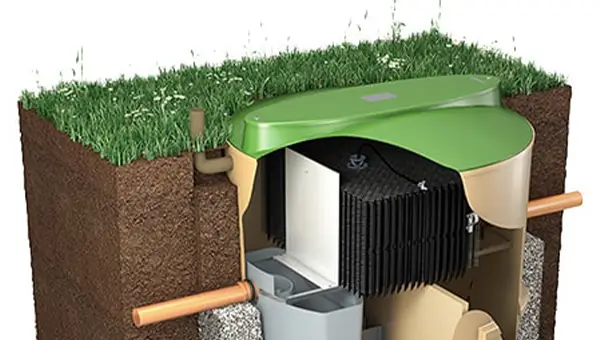
Picture a serene countryside cottage nestled amidst rolling hills. Idyllic, right? But what happens when that peaceful haven lacks one crucial element – a connection to the main sewage line? For many rural residents, and even some urban dwellers, off-mains drainage solutions become the lifeline to a comfortable, modern lifestyle. And at the heart of this vital infrastructure, there often lies a sewage treatment plant.
Having a sewage treatment plant system isn't just about ensuring a functional bathroom experience while living off the grid – it's about protecting the environment as well as your own peace of mind. Knowing how to use and maintain your system properly is extremely important, especially if you aren’t used to having an off-mains system. To help with this, we’ve written this article as a general overview of do’s and don’ts as well as a guide to helpful maintenance tips for a typical sewage treatment plant.
Note: The instruction manual for your specific treatment plant should always be prioritised as a source of information. If you do not have the manual, contact the manufacturer or seek the advice of a drainage specialist before using your off-mains drainage system.
What can go down the drains if you have a sewage treatment plant?
The biological treatment process of a sewage treatment plant is generally self-regulating and will require no specialised knowledge to operate. However, it is important to know how it works and to understand that there are some restrictions to use when compared with a normal mains sewer connection.
Sewage treatment plants use colonies of live natural micro-organisms (also known as biomass) to break down the pollutants in the sewage that you flush, wash and drain away. This biomass can be damaged or destroyed by certain chemicals found in household cleaning products, especially if they are used in excessive amounts. This can lead to unpleasant smells occurring and, in extreme cases, the ultimate failure of the sewage treatment plant.
For this reason, it is important to follow the manufacturer’s guidance on what should and shouldn’t be flushed into the tank. The following is a list of the things that are likely to be affected:
- Detergents (washing machine & dishwasher) and washing up liquids. These are generally okay to use in the normal concentrations for typical household applications. Problems can occur, however, if you find yourself having to do unusual amounts of clothes washing, for example. Should this be the case, it is advisable to spread the extra cleaning out over a few days just to be safe. Excessive use of Biological washing powders can cause degradation of the biomass. Other ways you can help protect your tank's biomass are by switching to non-biological detergents, without enzymes, or using liquid detergents instead of powder. Always avoid excess use.
- Floor cleaners, disinfectants, and bleaches. Generally safe to use, in accordance with makers recommendations, but it is advisable to do so with the minimum necessary concentrations. However, you should never pour neat disinfectant or bleach down sinks or outside gullies, as this would be damaging to the biomass. If there is a smell arising from the drains it will usually indicate a problem in the system that will need fixing by a professional.
- Nappy disinfectants and bottle sterilising fluids. These can still be used, but you should ensure that the used fluid is well diluted with water before pouring it down the drain.
- Waste disposal units. Using a waste disposal unit won’t cause damage to the biomass, but it can put a considerable extra load on the sewage treatment plant, both in terms of organic load and liquid, as the ground up material is flushed into the unit. If you intend to use one of these with your sewage treatment plant system, please speak to the manufacturer of your chosen tank to find out if their product will be able to deal with the extra loads.
There are also some universal “Don’ts” when it comes to having a sewage treatment plant. Most of them are fairly obvious, but some of them might surprise you, so they are worth shining a spotlight on.
What can’t go down the drains if you have a sewage treatment plant?
Some things must NEVER be discharged into the drains if you have a sewage treatment plant, however. These include:
- Motor oil, grease, anti-freeze, brake fluid etc. - These automotive fluids are like oily sludge for your treatment plant. They don't decompose easily and can coat the bacteria responsible for breaking down waste, effectively smothering them and hindering the entire treatment process.
- Cooking oil and fat - Similar to motor oil, fats and grease solidify when they cool down, causing nasty blockages in pipes and pumps. This can lead to overflows, foul odours, and costly repairs.
- Weed-killers, insecticides, fungicides and other gardening chemicals - These harsh chemicals are designed to kill living things, including the beneficial bacteria in your treatment plant. This can disrupt the delicate balance within the system, leading to poor treatment and potentially harmful pollutants being released into the environment.
- Paint, thinners, white spirit, turpentine, creosote etc. - These solvents and paints are often volatile and toxic, meaning they can evaporate and release harmful fumes. They can also damage the delicate parts of your treatment plant, causing leaks and malfunctions.
- Chemical drain cleaners/commercial cleaning products - While they might seem like a quick fix for clogged drains, these harsh chemicals can corrode pipes and disrupt the natural bacteria in your treatment plant. This can lead to long-term damage and decreased efficiency.
- Acid based brick/stone floor cleaners - Acids can destroy the lining of your treatment tank, causing leaks and structural damage. Additionally, they can throw off the pH balance within the system, affecting the bacteria's ability to function.
- Medicines - While medications might seem harmless going down the drain, their active ingredients can disrupt the bacteria in your treatment plant and potentially contaminate the treated water. ALWAYS return unused medicines to a pharmacist for safe disposal
- Photographic developing fluids - These chemicals are often toxic and can harm both the bacteria in your treatment plant and the environment if released into the ground.
- Nappies, sanitary towels, toilet wipes etc. - These non-compostable materials can clog pipes, pumps, and filters, causing overflows and malfunctions. Even biodegradable items don't break down fast enough in the treatment plant's controlled environment and can lead to blockages and malfunctions.
By avoiding these items, you can help ensure your domestic sewage treatment plant runs smoothly and efficiently, protecting your investment, the environment, and your peace of mind. Remember, a healthy and happy treatment plant is a key part of your off-mains drainage system, so treat it with care!
How to maintain a sewage treatment plant
Before installing your sewage treatment plant, you should have already planned for future maintenance needs. Things like making sure there is suitable access for desludging to take place and keeping covers clear of obstruction (i.e. don’t cover them with soil or grass to try and hide them away). But once the system is installed, what can you do to help keep it in good working order and problem-free?
First and foremost, you are going to want to take out some kind of Maintenance Agreement and Service Plan with either the manufacturer, if available, or a suitably qualified maintenance company. Annual desludging and servicing are critical to the operation of your system, but they can be costly. Taking out a service plan at the time of purchasing your tank, though, could save you money in the long run and will certainly save you the hassle of remembering to get it done yourself.
The annual servicing, which should be conducted by a qualified professional, will usually check things like:
- Sludge return
- Functionality of blower and/or pump
- Pump pressures
- Replacement of pump filters
- Pump diaphragm
- Alarm functionality
- Ventilation functionality
- Covers and locks
Between these services though, there are some checks you can make yourself to ensure the system is operating correctly. These include:
- Checking all vents to make sure they are not blocked or obscured
- Checking the air blower is working by listening for a gentle hum when standing beside the plant
The installation manual provided by the manufacturer will most likely have other recommendations of checks you can make yourself. Please ensure that you always follow their health and safety guidance for any maintenance you plan to do.
How to identify problems with your sewage treatment plant
While your sewage treatment plant may seem like a quiet workhorse, it does occasionally communicate concerns. Recognizing these signs early can prevent serious issues and ensure smooth operation. Let's explore some tell-tale indicators that something might be amiss:
- Unpleasant Odours - If you're detecting a persistent foul smell near your treatment plant, it's not a friendly greeting from the bacteria - it's a red flag. This could indicate overloading, insufficient aeration, or malfunctioning equipment.
- Backups and Blockages - Clogged drains or overflowing toilets are never pleasant surprises. While occasional blockages can happen, frequent backups suggest deeper issues like improper disposal of non-biodegradable items or insufficient tank maintenance.
- Slow Drainage - Does your sink seem to take an excessively long time to drain? Sluggishness could point to a partially clogged pump, inadequate air supply, or even bacterial imbalance in the treatment tank.
- Alarm Bells - A rather obvious one, but most plants have either a built-in alarm or come recommended with one as an accessory to alert you of potential problems. Whether it's a high-water level warning, a pump malfunction notification, or an indicator of low oxygen levels, heed these alarms promptly. Ignoring them can lead to more extensive damage.
- Discoloured Effluent - Not always possible to see, depending on your discharge location, but worth checking if you can. Though the treated water shouldn't be crystal clear, excessive cloudiness, unusual colours, or visible solids are not good signs. This could indicate incomplete treatment, bacterial imbalances, or even contamination.
- Lush Greenery Around the Plant - While a healthy lawn might seem like a bonus, overly lush vegetation near your treatment plant isn't a good sign. This could indicate leaks or seepage from the system, potentially posing environmental risks.
Remember, if you notice any of these signs, don't panic! Early detection is key. Consult your system's manual or contact a qualified professional for an assessment. Prompt action can prevent bigger problems and keep your treatment plant happy and humming.
And that’s it for our advice on using and maintaining a domestic sewage treatment plant. We hope it has been informative and helped to answer most of your questions regarding the responsibilities of owning a property with a sewage treatment plant system.
Should you have any other questions or need any further advice, however, please do not hesitate to contact us. JDP’s team of experts are always on hand to help with all of your civils and drainage needs.


